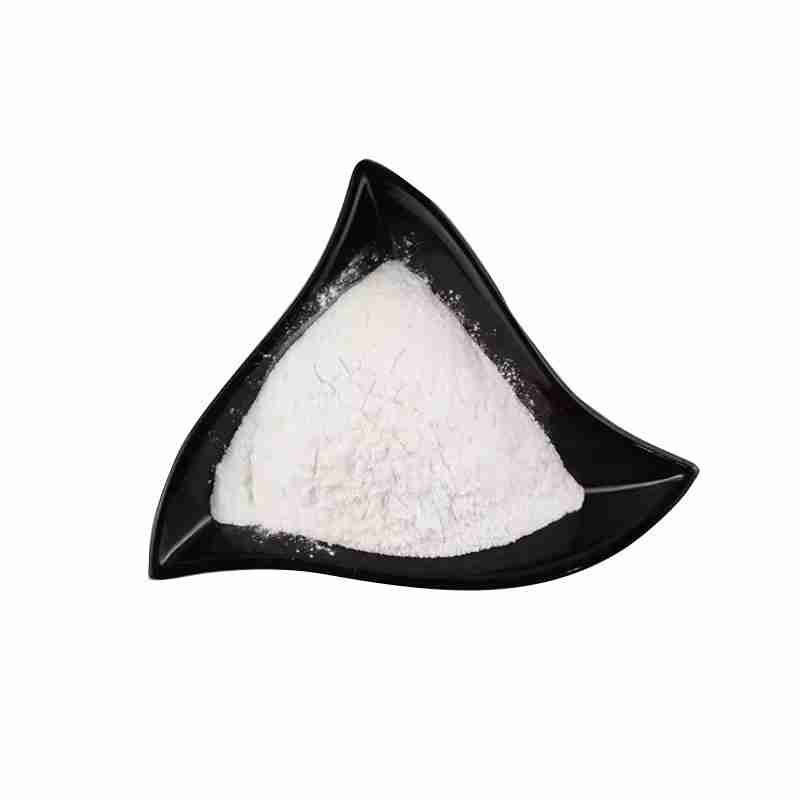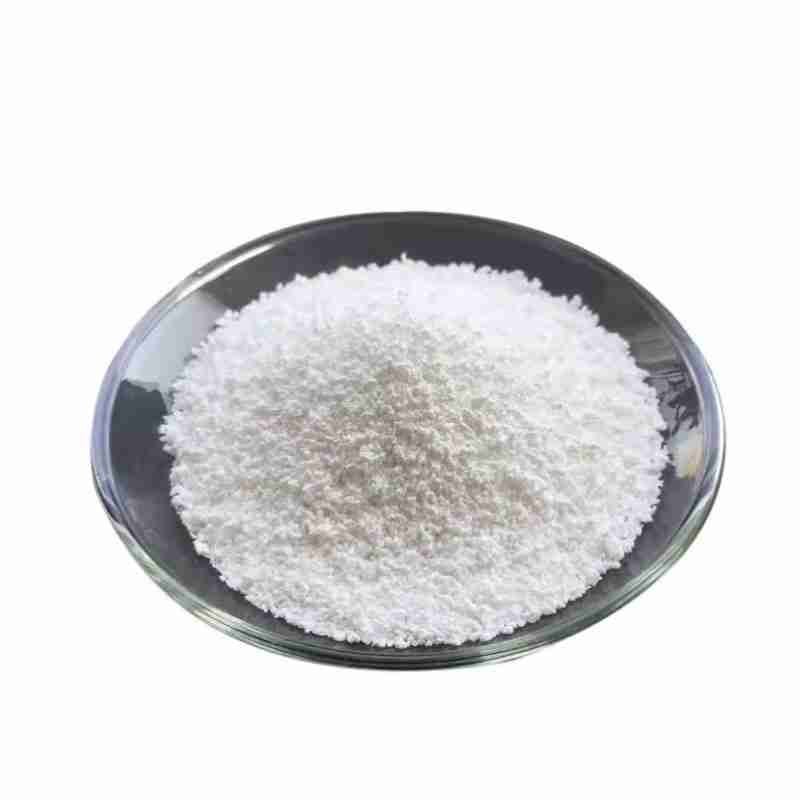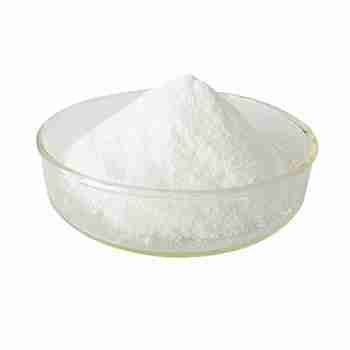Ursodeoxycholic Acid CAS 128-13-2
Synonyms: UDCA Chemical
Assay: 99%
Appearance: white powder
Capacity: 300MT/Month
Packaging: 25KG/Drum
Sample: available
related documents:
COA of Ursodeoxycholic acid
TDS of Ursodeoxycholic acid
Request for product documents
发送询盘
Description
Ursodeoxycholic Quick Details
Chemical Name: Ursodeoxycholic acid
CAS No.:128-13-2
Molecular Fomula:C24H40O4
Chemical Structure:
Molecular weight:392.57
Appearance:white powder
Assay:99%
Typical Properties
Item
Specifications
Appearance
White or almost white powder
Solubility
Practically insoluble in water;freely soluble in ethanol(96 per cent);slightly soluble in acetone;practically insoluble in methylene chloride.
IR Identification
IR absorption spectrum should be in accordance with the reference standard.
TLC Identification
The principal spot in the chromatogram obtained with the rest solution(b) is similar in position, colour and size to the principal spot in the chromatogram obtain with reference solution(a).
Chemical Identification
The suspension obtained is greenish-blue.
Specific optical
+58.0o~+62.0o
Melting point
About 202??
Impurity C
??0.1%
Impurity A
??1.0%
Unspecified Impurities
??0.1%
Total Impurities
???1.5%
Methanol
??3000ppm
Isopropanol
??5000ppm
Ethyl acetate
??5000ppm
Loss on drying
??1.0%
Sulfated ash
??0.1%
Heavy metals
??20ppm
Total Aerobic Microbial Count
??103cfu/g
Total Yeasts&Moulds Count
??102cfu/g
Escherichia coli
Not detected
Assay(on dry substance)
?99.0%~101.0%
Particle Size
For reference
Ursodeoxycholic acid Usage
Suitable for the prevention and treatment of cholesterol gallstones, anionic detergent
Packaging and Shipping
Packing: 25KG/drum
Delivery: General goods
Ursodeoxycholic acid Storage
Storage Conditions: Store in a cool,dry,well-ventilated place.
| 5 |
|
0 |
| 4 |
|
0 |
| 3 |
|
0 |
| 2 |
|
0 |
| 1 |
|
0 |
- 2
- 2-diallylpent-4-en-1-amine
- 4
- 95-16-9
- Ammonium sulfamate
- Benzothiazole
- cas:67889-00-3ح2
- cas:83524-75-8 | pigment black 32
- cas:928836-00-4 | 2
- cas:932745-70-5 | 4
- Chemical Minerals
- Coconut diethanolamide
- Daily Chemicals
- discount
- for sale
- General pvc resin
- hexyl D-glucoside
- in stock
- Lauramidopropyl betaine
- LAURIC ACID MONOETHANOLAMIDE
- Petroleum Additives
- Plasticiser
- Ploymers
- price
- PVC
- quotation
- Raw Materal
- Remove term: Petroleum Additives Petroleum Additive
- SODIUM ETHYL 2-SULFOLAURATE
Related Products
Levodopa, also known as L-DOPA or 3,4-dihydroxy-L-phenylalanine, is a naturally occurring amino acid and a critical precursor in the biosynthesis of the neurotransmitters dopamine, norepinephrine, and epinephrine. With the molecular formula C9H11NO4, levodopa is a large, neutral amino acid that plays a significant role in the treatment of Parkinson’s disease due to its ability to cross the blood-brain barrier and be converted into dopamine.
Chemically, levodopa is synthesized from the precursor amino acid tyrosine through the action of the enzyme tyrosine hydroxylase. As a medication, levodopa is often formulated with a peripheral DOPA decarboxylase inhibitor to reduce its conversion to dopamine outside the brain, thereby increasing its effectiveness and reducing side effects.
Levodopa is characterized by its effectiveness in alleviating the motor symptoms of Parkinson’s disease, such as tremors, rigidity, and bradykinesia. It is typically administered orally and absorbed from the gastrointestinal tract, where it is then transported to the brain.
In summary, levodopa is a vital pharmaceutical compound used in neurology for its role in treating Parkinson’s disease by replenishing the brain’s dopamine levels. Its targeted delivery and conversion to dopamine make it an essential treatment option for managing the motor symptoms associated with this condition.
Chemical Name:?Tebipenem pivoxil
CAS No.: 161715-24-8
Molecular Formula: C22H31N3O6S2
Molecular Weight: 497.63
Chemical Name: Potassium Castorate
CAS No.: 8013-05-6
Molecular Formula: C57H107K3O12
Molecular Weight: 1101.74718
Appearance: Yellow Liquid
Chemical Name: Sultamicillin
CAS No.: 76497-13-7
Appearance:?White powder
Assay??99.0%
Chemical Name: Ammonium Iron(II) Sulfate
Synonyms: Diammonium iron bis(sulphate); iron (ii) ammonium sulfate
CAS No.: 10045-89-3
Molecular Formula: FeH5NO4S
Molecular Weight: 170.95
Chemical Name:Sodium Stibogluconate
CAS No.:16037-91-5
Appearance:?White liquid
Assay??99.0%
Lidocaine hydrochloride is an anesthetic as well as an antiarrhythmic drug. Clinically, it is mainly used for infiltration anesthetic, epidural anesthetic, topical anesthesia (consisting of mucosal anesthetic throughout thoracoscopic examination or abdominal surgical treatment) as well as nerve conduction block. It can additionally be used for early ventricular tightenings and also ventricular tachycardia after acute myocardial infarction, and also for ventricular arrhythmias triggered by digitalis poisoning, cardiac surgery as well as cardiac catheterization. But it is usually inadequate for supraventricular arrhythmias.
Urapidil is a sympathetic antihypertensive drug. It acts as ?? 1 ?C adrenoceptor antagonists and 5-HT 1A receptor agonists act. Although the initial report showed that urapidil was also a ?? 2 ?C adrenoceptor agonist, which was not confirmed in later studies, proved that it had no agonist effect in the saphenous vein of dogs and ileum of guinea pigs. With others ?? Unlike 1-adrenoceptor villains, urapidil does not cause response tachycardia, which may be connected to its weak ?? 1-adrenoceptor antagonist activity and its impact on heart vagal drive. Urapidil has actually not been approved by the US Food and drug administration, yet it is offered in Europe.
Urapidil (URA), chemical name is 6-[[3-[4-(2-methoxyphenyl)-1-piperazinyl]propyl]amino]-1,3-dimethyl -2,4(1H,3H)-pyrimidinedione, trade name: ebrantil (ebrantil), synonym: excellent matchi, uracil substituted by phenazine.
Chemical Name: Tylosin tartrate
CAS No.:?74610-55-2
Appearance:?white powder
Assay????98.0%
Chemical Name: Quercetin-3-O-sophoroside
CAS No.: 18609-17-1
Molecular Formula: C27H30O17
Molecular Weight: 626.52
Common English name: 5-iodo-2,3-dihydropyridazin-3-one
CAS No.: 825633-94-1
Molecular formula: C4H3IN2O
Molecular weight: 221.98
Sample: Available
Levodopa, also known as L-DOPA or 3,4-dihydroxy-L-phenylalanine, is a naturally occurring amino acid and a critical precursor in the biosynthesis of the neurotransmitters dopamine, norepinephrine, and epinephrine. With the molecular formula C9H11NO4, levodopa is a large, neutral amino acid that plays a significant role in the treatment of Parkinson’s disease due to its ability to cross the blood-brain barrier and be converted into dopamine.
Chemically, levodopa is synthesized from the precursor amino acid tyrosine through the action of the enzyme tyrosine hydroxylase. As a medication, levodopa is often formulated with a peripheral DOPA decarboxylase inhibitor to reduce its conversion to dopamine outside the brain, thereby increasing its effectiveness and reducing side effects.
Levodopa is characterized by its effectiveness in alleviating the motor symptoms of Parkinson’s disease, such as tremors, rigidity, and bradykinesia. It is typically administered orally and absorbed from the gastrointestinal tract, where it is then transported to the brain.
In summary, levodopa is a vital pharmaceutical compound used in neurology for its role in treating Parkinson’s disease by replenishing the brain’s dopamine levels. Its targeted delivery and conversion to dopamine make it an essential treatment option for managing the motor symptoms associated with this condition.


















Reviews
There are no reviews yet.